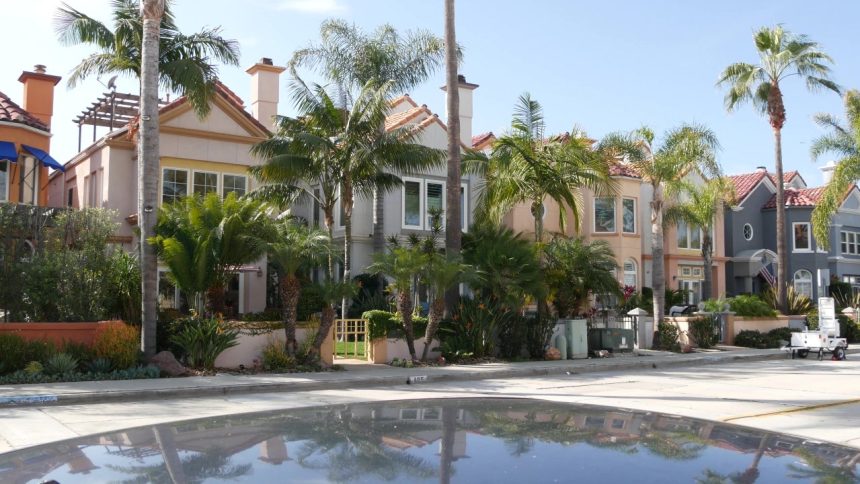Does the Golden State home you’re hoping to sell need some TLC? You could opt to fix and upgrade the property before listing it on the market, in the hopes of bringing in a higher sale price. However, that can be an onerous process that takes money and time to accomplish. If you don’t have either to spare, you might consider selling your house “as-is.” This means listing the home in its current condition, without undertaking any repairs or improvements. Here’s what you’ll need to know about selling a house as-is in California.
Can you sell your house as-is in California?
Yes. When you sell a house as-is, you’re effectively telling buyers that what they see is what they get — you will not be making any repairs, changes or improvements to its existing condition. So buyers know upfront that they shouldn’t bother asking you to, for example, replace a broken furnace, even if it’s highlighted in a home inspection.
Of course, that doesn’t mean that you can hide or misrepresent any issues you’re aware of: As-is sellers in California must make the same disclosures as any other home seller in the state. Sellers must filling out the state’s Transfer Disclosure Statement detailing any known defects with the property that might affect its value or livability, like past flood damage or outstanding legal claims. You may also be required to complete a Seller Property Questionnaire, which covers further disclosures and can be provided by the California Association of Realtors.
When selling a home as-is, it’s crucial to make sure a clearly worded provision or clause spelling that out is included in your real estate contract or purchase agreement. You are not required to enlist a real estate agent to sell your home here, but if you do — which you should seriously consider, given how much money is at stake in California’s pricey housing market — they can help you make sure an appropriate contract clause is in place.
How much can I sell my house for as-is?
A home being sold in as-is condition will not bring in as much as it would if it were move-in ready. However, determining the exact difference in profit between selling as-is and renovating before listing is challenging. Various factors, such as your area’s local market and the extent of the needed repairs, will influence the outcome. And if the home is in a highly sought-after location, its condition may matter less because most of the value is in the location.
Some sale methods are likely to bring in more money than others, though. To earn the best price possible for your as-is sale, your best bet is to enlist the help of a local real estate agent, especially if you can find someone with as-is experience. You’ll still have to tidy up for showings and present the home in its best light, but agents can help buyers understand its issues and see its potential.
If your home is really not in great shape, a traditional market sale might be tricky. Most buyers are not looking for a serious project, and even if they are, securing financing for a home in poor condition can be difficult. If the amount of needed repairs is overwhelming, or you just want to unload the home as quickly and easily as possible, look into one of the many companies that buy houses in California. These outfits typically buy homes in any condition, no matter how rough, and they move fast, often closing the entire deal in a week or two. However, in exchange for the speed and convenience, you’ll earn a lower price on the sale — they usually do not pay full market value for the homes they buy.
Alternatives
A traditional agent-assisted sale is not the only way to sell your house without breaking the bank on repairs. Here are some other options to explore, depending on your timeline and urgency:
- Cash homebuyers: Companies that buy houses for cash will take an unwanted house off your hands super-fast — often within just a week or so — and you won’t have to do any repairs, pay any fees or even clean up first. This can be a great option if you need to relocate ASAP, need cash immediately or don’t have the time or money to do the work the property needs. However, this method will yield a lower sale price than you’d get in a traditional sale.
- iBuyers: Opendoor, one of the nation’s largest iBuyers, also makes fast cash deals in many major California markets. However, they are more selective about what kinds of homes they buy than other cash homebuyers, and they won’t buy homes that have very significant issues.
- Make only major repairs: You might get a higher as-is price if you fix the big stuff, like a roof leak or broken HVAC system, and then leave the rest for the buyer. A prelisting home inspection can help you determine what the most urgent repairs are.
- Delay the sale: If you have the time and resources, your best bet for maximizing profits could be to postpone listing your home until you’ve made all the fixes it needs. If you’ve accumulated sufficient equity, you could help pay for these upgrades with a home equity loan or line of credit.
Should you sell your house as-is in California?
To make an informed decision, weigh the benefits and drawbacks carefully.
Pros
- Saves money: Fixing up a house before selling isn’t cheap. Selling as-is allows you to bypass the expenses of repairs and renovations.
- Moves quickly: No repairs also means you don’t need to wait on contractors before you can sell. And once you find a buyer, the as-is selling process requires much less back-and-forth negotiation than a traditional sale.
- Attracts cash buyers: Many cash homebuyers and real estate investors are on the lookout for as-is properties that they can buy and renovate for resale. A cash deal means you get your proceeds much faster than selling to a buyer who needs to finance the purchase with a mortgage.
Cons
- Lower profits: Buyers aren’t going to pay top-dollar for a home they know needs work, so most as-is sales will bring in less money than a home in good condition.
- Harder to find a buyer: If you’re hoping for an open-market sale, it might be tricky to find an as-is buyer. The number of buyers willing to take on a fixer-upper is smaller compared to the overall homebuyer pool.
- Mortgage challenges: Many lenders don’t want to roll the dice on a property that has major issues. Those willing to buy a home in poor condition might struggle to get financing approved, making the pool of available buyers even smaller.
Bottom line
Selling your home as fast as possible, with as little work as possible, can be tempting. But, while selling as-is does eliminate hassles, it will also usually result in less money in your pocket. Consider the pros and cons before you commit, and evaluate your financial goals and desired sale timeline. It may be worth your while to invest a bit of time and money in repairs in exchange for a much bigger payday at the closing table.
FAQs
-
As the seller, you are not required to pay for a home inspection — though doing so can be useful to determine what issues are worth addressing before you list the home for sale. Buyers of an as-is property will almost certainly want to have the home inspected, though. Unless the buyer waives their right to an inspection, you, the seller, must provide reasonable access for a home inspector.
-
Whether you lose money depends largely on how much you paid for the house in the first place, but an as-is house is not likely to sell for top dollar. Unless it’s truly a tear-down and the buyer simply wants the land, you’ll make more on a home that’s in good condition than on one that the buyer has to invest money into fixing.
-
As-is home sellers in California must complete and provide the same legal disclosure documents as any other seller. This will include the state’s Transfer Disclosure Statement, which lists any known issues or defects with the property. It might also include a Seller Property Questionnaire and, for homes built before a certain date, a lead paint disclosure. If the property is part of a homeowners association, you’ll also have to provide information about the HOA’s financial status, fees and bylaws.
Read the full article here
















